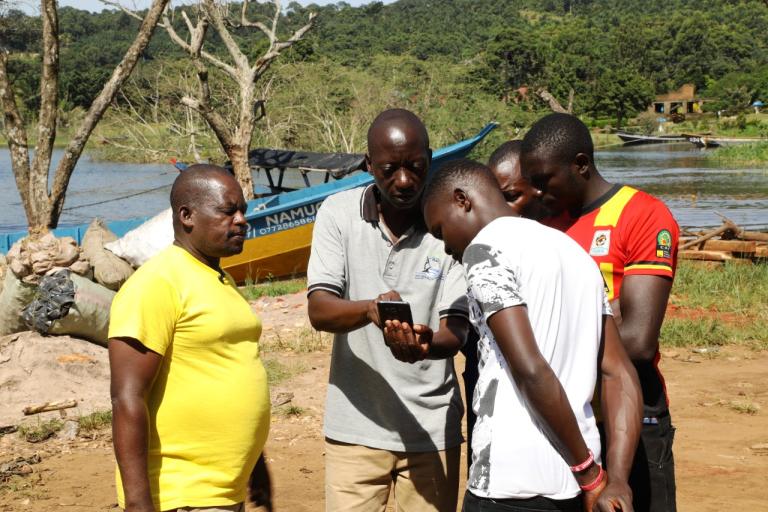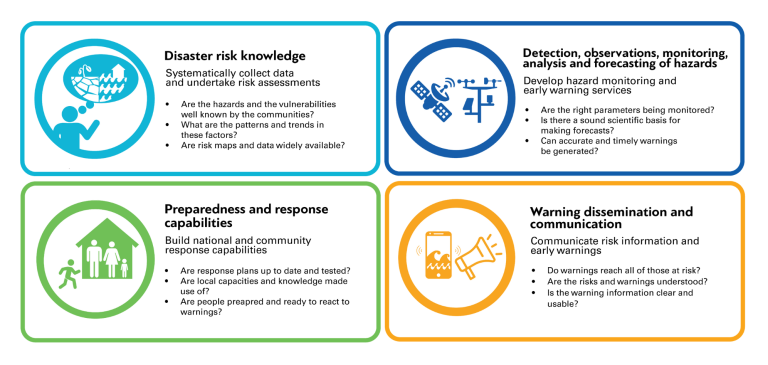Private sector – and Big Tech - rally behind Early Warnings for All
The private sector, including Big Tech companies, are joining the WMO, development and disaster risk reduction communities in rallying behind the new United Nations campaign to ensure that every person in the world is protected by early warning systems within the next five years.

The private sector, including Big Tech companies, are joining the WMO, development and disaster risk reduction communities in rallying behind the new United Nations campaign to ensure that every person in the world is protected by early warning systems within the next five years.
At the request of UN Secretary-General António Guterres, WMO is leading the Early Warnings for All initiative and will present an action plan at the forthcoming UN climate conference, COP27, in Sharm-el-Sheikh.
“The provision of global multi-hazard early warnings is our collective responsibility,” said a statement read out at the end of a one-day technical conference on 22 October.
It called on “stakeholders from all sectors to advocate for and contribute to a distributed global infrastructure that delivers multi-hazard early warnings to all, particularly to protect the most vulnerable members of society.”
The technical conference brought together members of WMO’s Services and Infrastructure Commissions, which are responsible for the basic observing, monitoring and forecasting networks as well as the development and dissemination of early warnings. It also embraced the disaster risk reduction and humanitarian communities as well as the private hydrometeorological sector and some of the world’s biggest Information Technology players.
The one-day event injected a sense of dynamism into the Early Warnings for All Initiative. It laid the foundations for more intense collaboration in the months ahead, in particular on how to leverage additional sources of funding through more effective public private engagement (PPE).

Representatives of private sector organizations including Alibaba, F24, Google, IBM, Microsoft and Smart Communications all voiced commitments to the Early Warnings for All Initiative. Their presentations stressed the huge opportunities as a result of progress in cloud computing, artificial intelligence, digital platforms and other areas of digital technology to address infrastructural and technological gaps in early warning services. They gave practical examples and case studies of how smart phones have the power to reach hundreds of millions of people, including in the most vulnerable countries.
Technical Commissions
“The most fundamental thing is that we have to do it in partnership. The National Meteorological and Hydrological Services are the authoritative voice in issuing weather, water and climate related warnings and we must never forget that. WMO Members have very distinctive skills, including collection and exchange of data, modelling and forecasting and issuing warnings. But WMO can’t and indeed shouldn’t try to do it all,” said Services Commission President Ian Lisk.
The Services Commission, which met from 17-21 October, said it would take “immediate action to advance practical implementation of the challenge.“ The session agreed a rafter of resolutions to try to strengthen early warning capacity for hazards such as heatwaves, flash floods, drought and wildfires.
Michel Jean, President of the WMO Infrastructure Commission, said that the Early Warnings for All Initiative will not have to start from scratch. It can leverage existing WMO programmes, including the acclaimed World Weather Watch, which turns 60 next year, and use tools like WMO’s Common Alerting Protocol, which is a standard emergency message suitable for all media and all hazards.
But there are many gaps that need to be filled, and there is a critical role for the private sector in building the “last mile” system. The role of Big Tech is fundamental given the need for large data exchange and data access platforms and for accessible internet.
“We are dealing with global problem with global, national and local consequences. We can not close this gap without the private sector. We are all in this together. We need to work much faster and we need to work much better together. If not, we will fail, and failure in my view is not an option,” said Mr Jean.
Filling the Gaps

Early warning systems (EWS) are an effective and indispensable means to save lives and reduce losses related to weather, climate, water and other environmental hazards and hence a key element for climate change adaptation. They are needed more than ever before.
Hazards such as floods, drought and storms are on the increase and they are becoming more complex as a result of climate change. This results in hundreds of billions of dollars of economic losses and a heavy toll on human lives and wellbeing ever year.
The technical conference statement noted that:
- Despite the clear need, there are still major gaps in early warning systems affecting one third of the world’s most vulnerable people who are not protected by Early Warning Systems;
- That 53% of National Meteorological and Hydrological Services (NMHSs) report that their ability to provide effective early warning services is limited due to lack of capacity in observing and monitoring infrastructure, data processing and forecasting systems, communication and information management systems, and institutional support.
“For WMO that’s a very strong red flag,” said WMO Deputy Secretary-General Dr Elena Manaenkova. Although the number of casualties from weather-related disasters has fallen, the number of disasters is on the increase and this trend is expected to continue in future.
“In WMO saving lives is strategic priority number one,” said Dr Manaenkova.
Presentations and further details of the technical conference are available here

